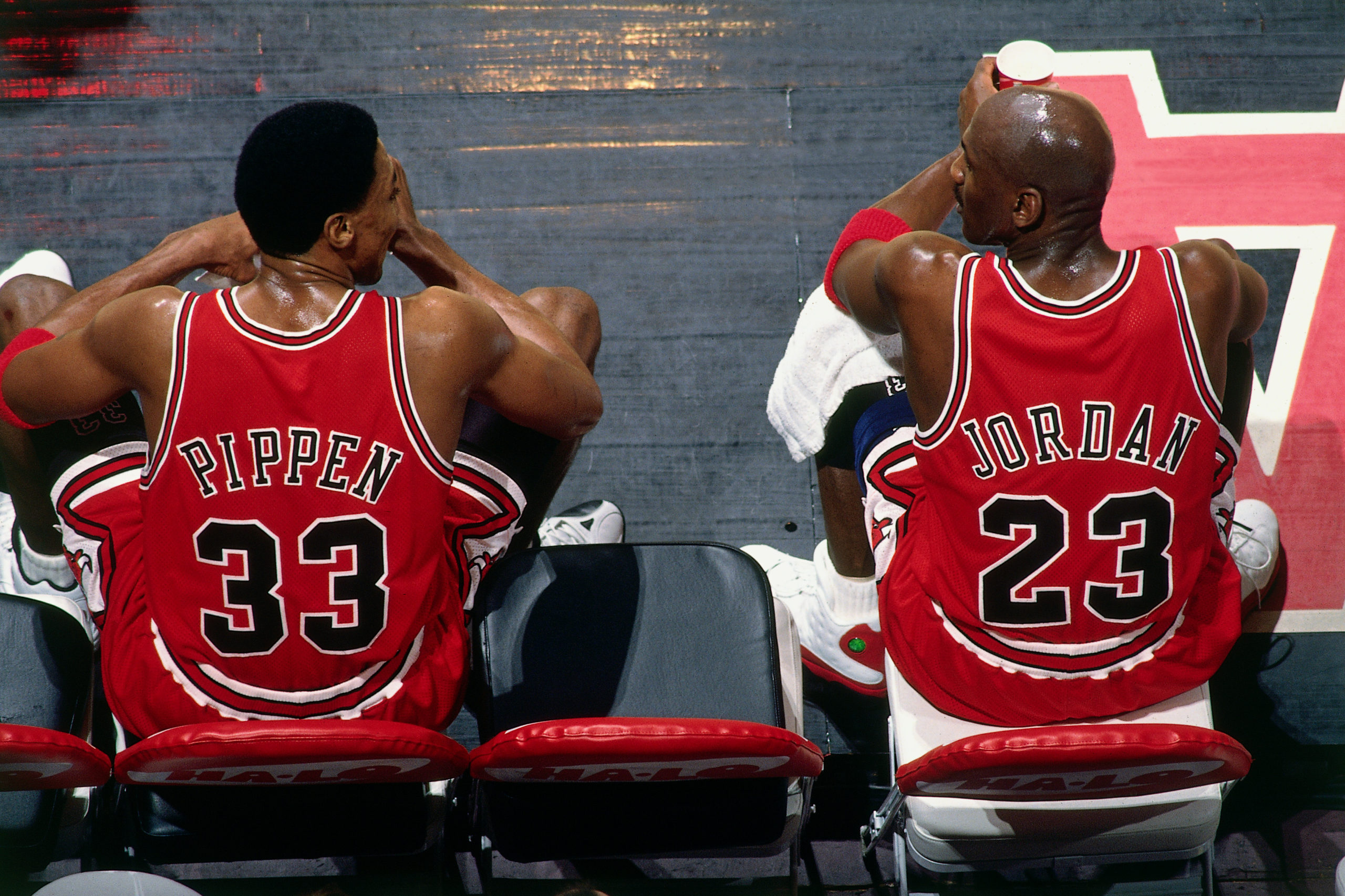‘The Last Dance’ director recalls moment Jordan stopped being just ‘logo on a shoe’

Scottie Pippen #33 and Michael Jordan #23 of the Chicago Bulls sit on the bench during the game against the Vancouver Grizzlies at General Motors Place on January 27, 1998 in Vancouver, British Columbia, Canada. NOTE TO USER: User expressly acknowledges and agrees that, by downloading and or using this photograph, User is consenting to the terms and conditions of the Getty Images License Agreement. Mandatory Copyright Notice: Copyright 1998 NBAE (Photo by Andy Hayt/NBAE via Getty Images)
As accomplished as Jason Hehir is in his field, the one thing people will stop him on the street for in the years to come is “The Last Dance.”
The popular sports documentary, which chronicles the Chicago Bulls’ chase of their final NBA title in the 1997-98 season, has thrust Hehir—who has previously won Emmys for other sports-related shows—into the global limelight. With sports shut down by the COVID-19 pandemic, “The Last Dance” has monopolized the attention and discussion of a sports-hungry audience and has spawned several spinoff stories told over and over again.
Article continues after this advertisementBut through 500 hours of never-before-seen footage, hundreds more of interviews and sound bites, and the entire process of completing the documentary, there is one thing that the 43-year-old Hehir will always tell people when he tells his story about making “The Last Dance.”
“I think it’s the first time I met Michael,” Hehir said. “Because … as I was on the elevator to go up to this lounge in this hotel where he was, he still was that two-dimensional figure to me.”“He still was a logo on a shoe, he still was a poster on a wall, he still was an image on a T-shirt,” Hehir told Filipino journalists recently in an online roundtable discussion facilitated by Netflix.
Jordan’s status as a global sporting icon remains unchallenged that over 20 years since his last title, a 10-part series chronicling that championship has become the most in-demand documentary—and sports content—at the moment.And from being hampered by the coronavirus pandemic to digging for archived B-rolls to ensure Bulls general manager Jerry Krause had his side aired, Hehir has tons of stories to tell people who will chat him up in the future about the show.
Article continues after this advertisementBut no story compares to that first day in front Jordan. The meeting created a lasting impression on Hehir that it guided his creative process—he wanted viewers to catch a 3D glimpse of the “logo on a shoe.”
Hehir wanted to “humanize” Jordan, which he admitted was a challenge because of the basketball legend’s “superhuman” status.
That first meeting, however, allowed him to see past the myth.
“I exited that elevator and I sat down with him, and I started to get to know Michael Jordan the human being, and that’s where everything shifted,” Hehir said.
“I think that moment, that first meeting, is the story that I’ll [keep telling] people.” INQ